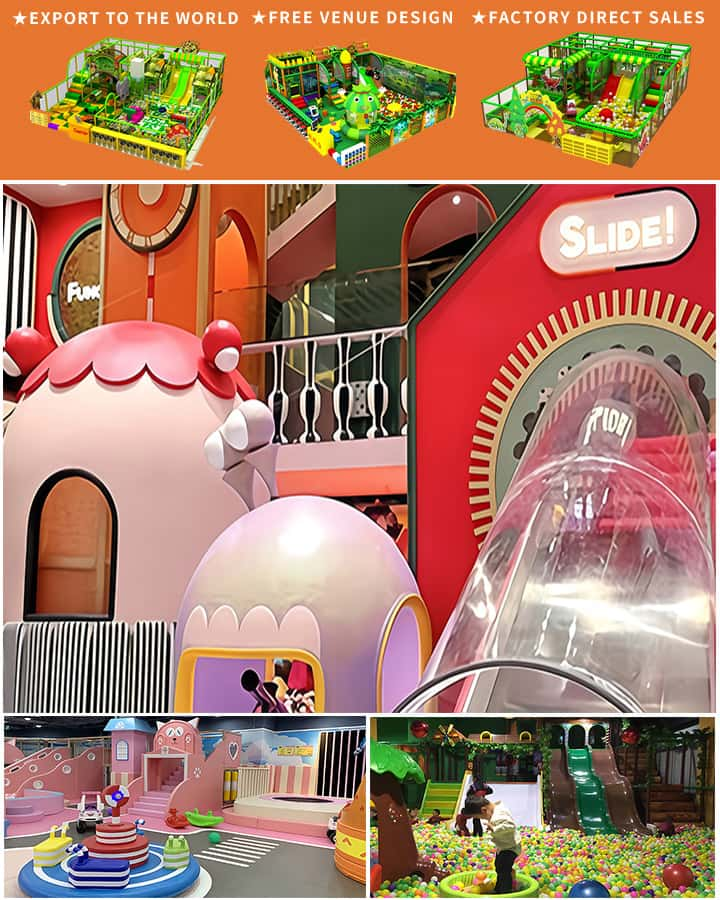Designing playgrounds that cater to toddlers in schools is an essential aspect of early childhood education. The right playground equipment not only supports children’s physical development but also fosters social, emotional, and cognitive growth. Here’s a guide on how to choose the best toddler playground equipment for schools, ensuring a safe and enriching play environment for young learners.
Safety First: A Non-Negotiable Priority
When selecting playground equipment for toddlers, safety is paramount. Equipment must comply with national safety standards such as ASTM (American Society for Testing and Materials) and EN (European Norms). Look for features like:
- Rounded Edges and Smooth Surfaces: Sharp corners and rough textures can cause injuries. Ensure all surfaces are rounded off and made from non-toxic materials.
- Soft Landscaping: Install shock-absorbing surfaces such as rubber mats or wood chips under play structures to cushion falls.
- Sturdy Construction: Equipment should be stable and securely anchored to withstand rough play. Avoid structures with loose parts that could pose choking hazards.
Age-Appropriate Design: Tailoring to Toddler Needs
Toddlers have unique requirements compared to older children. Their playground should be designed to accommodate their size, abilities, and curiosity:
- Low-Height Structures: Climbing frames, slides, and platforms should be low to the ground to prevent serious injuries from falls.
- Simple Equipment: Interactive elements such as spinning bowls, small slides, and gentle climbers engage toddlers without overwhelming them.

- Inclusive Features: Consider the diverse needs of all children by including wheelchair-accessible equipment and sensory-rich elements.
Encouraging Physical Development
Playgrounds are crucial for developing motor skills in toddlers. The right equipment can help enhance balance, coordination, and strength:
- Balance Beams and Steps: These encourage toddlers to practice walking and balancing, which are fundamental for overall movement.
- Climbers and Ladders: Gentle slopes and wide, easy-to-grip ladders promote climbing skills, enhancing both gross motor abilities and confidence.
- Ride-on Toys: Tricycles, rocking horses, and other ride-on toys develop leg strength and coordination while giving toddlers a sense of independence.
Stimulating Imagination and Creativity
A well-designed playground sparks imagination and creativity. Elements that encourage pretend play and exploration are vital:
- Themed Play Areas: Designated zones like miniature towns, nature spots, or fantasy realms inspire role-playing and storytelling.
- Musical Instruments: Install drums, xylophones, and bells that produce pleasant sounds when activated, encouraging musical experimentation.
- Sensory Walls: Textured panels with different materials like sandpaper, fabric, and plastic offer tactile experiences that stimulate sensory processing.
Promoting Social Interaction
Playgrounds are excellent venues for social development. Multi-user equipment helps toddlers learn cooperation, sharing, and communication:
- Seesaws and Merry-Go-Rounds: These require teamwork and turn-taking, teaching toddlers the basics of playing together harmoniously.
- Sandboxes and Water Tables: Collaborative activities like building sandcastles or pouring water foster group interaction and problem-solving skills.
Maintenance and Upkeep: Sustaining the Playground
Regular maintenance ensures playground equipment remains safe and enjoyable over time:
- Routine Inspections: Conduct frequent checks for wear and tear, loose bolts, and potential hazards.
- Immediate Repairs: Address any damage promptly to prevent accidents.
- Clean Regularly: Keep equipment clean to avoid the buildup of dirt and germs, especially in high-contact areas.
Conclusion
Investing in quality toddler playground equipment for schools creates a foundation for a safe, stimulating, and inclusive play environment. By prioritizing safety, age-appropriate design, and developmental benefits, schools can provide an exceptional space where young children flourish through play. Remember that a well-planned playground is more than just a place to have fun; it’s a critical tool for nurturing healthy, happy, and capable future citizens.




